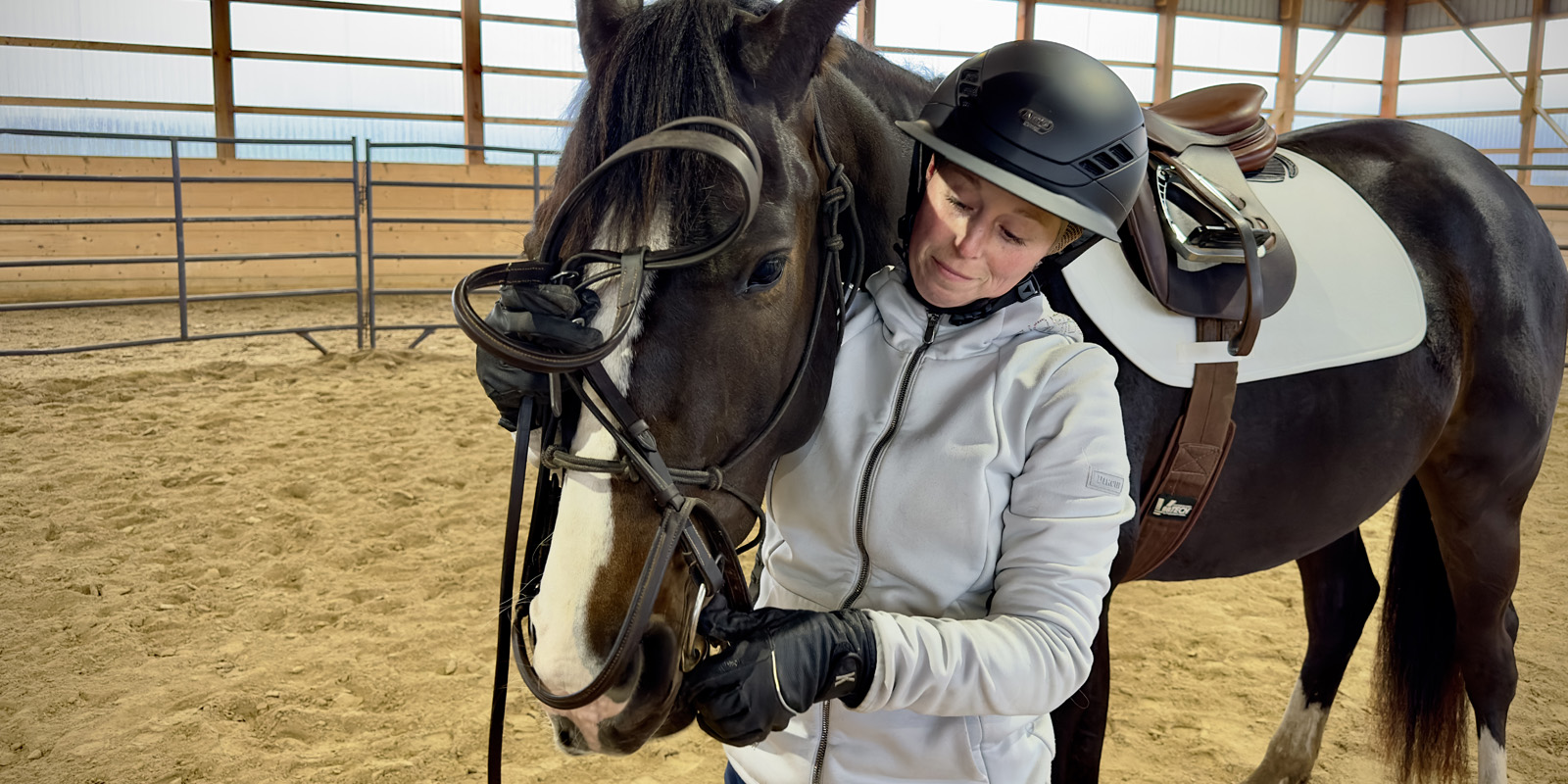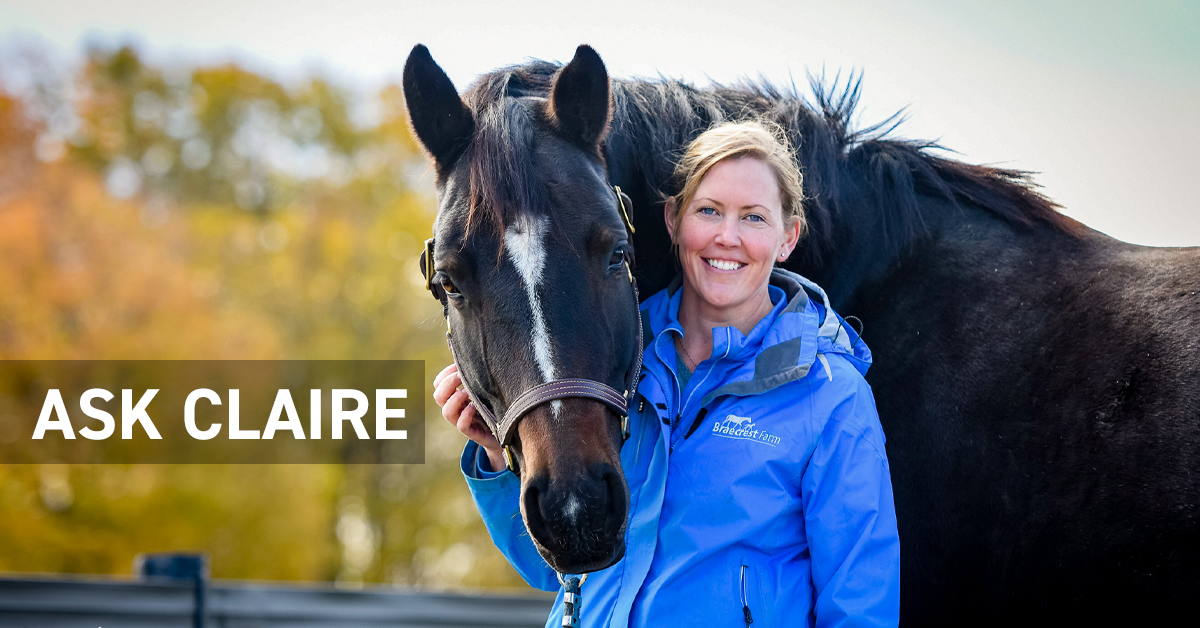CLAIRE: HOW DO YOU BRIDLE A HORSE FOR THE FIRST TIME?
Thank you for your question!
I see far too many people deciding, ‘Today is the day!’ and then just putting the bridle on without preparation. There are several problems with this approach, and although occasionally we get a total saint that never questions what we do or ask of them, most horses need the process broken down into manageable steps. Making sure you are thoughtful and methodical about the process will help avoid resistance habits and potential injury to the horse or handler, minimize stress and anxiety, and help bridling be a much more comfortable process for the horses and far easier for their riders!
Here are the steps I like to follow:
STEP 1:
Is the horse comfortable with me? I like to do a few weeks of groundwork before I even consider bridling. I want some engagement and trust so they can see some value in me and what I have to offer. Do they understand the basics of softening to pressure when asked?
STEP 2:
With a rope halter on, they need to be able to soften and put their head down when asked, and follow the feel of the halter when asked to flex to the left or right
STEP 3:
Can I touch them everywhere on their head without resistance? I want them to be comfortable with general touch, including ears and muzzle, long before I ask them to wear a bridle.
STEP 4:
Can I put my fingers in their mouth without them becoming worried or resistant? I work on this by gently placing my fingers in the sides of their mouth (be careful you’re not near their teeth) and asking them to accept the touch. If they resist, I try to keep my hand in place until they become still or soften to the touch, and then I reward the behavior by removing my fingers. Think of it like a question: The question is, ‘What are you supposed to do if I touch your lips/mouth?’ The answer you’re looking for is to ‘stay quiet and accept gentle touch.’ So when they give you the correct answer (rather than bracing or resisting) and by removing your hand/fingers (remove the ‘question’), you are communicating that they have found the correct response. Remember – horses learn by the release of pressure.
Once you have built your horse’s foundation for bridling, you are ready to give it a go!
I always use a plastic or rubber bit the first few times I bridle. The reason is that when you’re putting a bridle on or taking one off a green horse, there is a higher risk of the bit bumping their teeth. If you bump their teeth with a metal bit, this can be uncomfortable and sometimes painful, creating significant bridling resistance in the future. I also remove the reins and noseband, since there should be no pressure on their mouth for a few days. I continue having them wear a rope halter under the bridle through the groundwork and backing process so we can support them with the halter rather than a bit of pressure when they have no idea what it means. The next steps are putting a ‘feel’ on their mouth and beginning to educate them to follow the feeling of bit pressure.


Leave A Comment